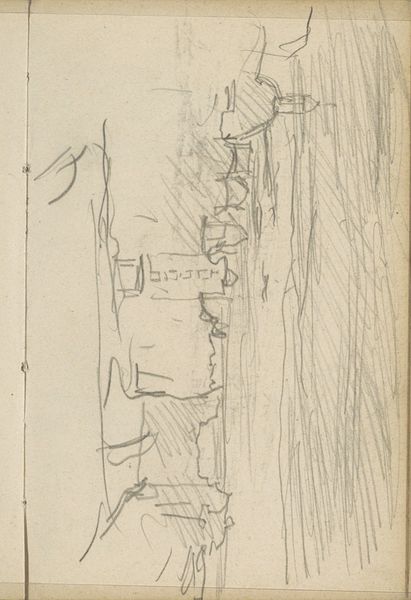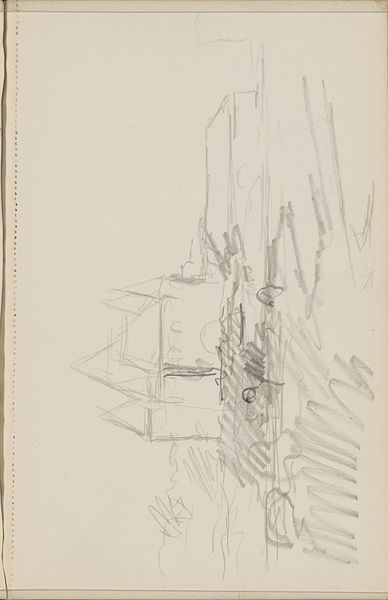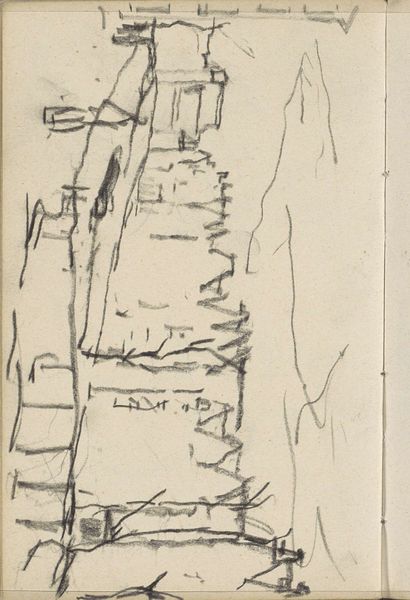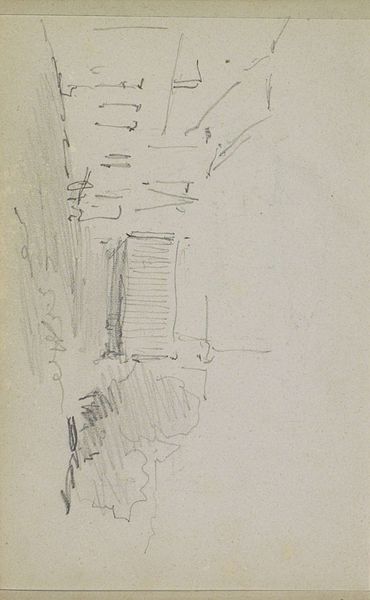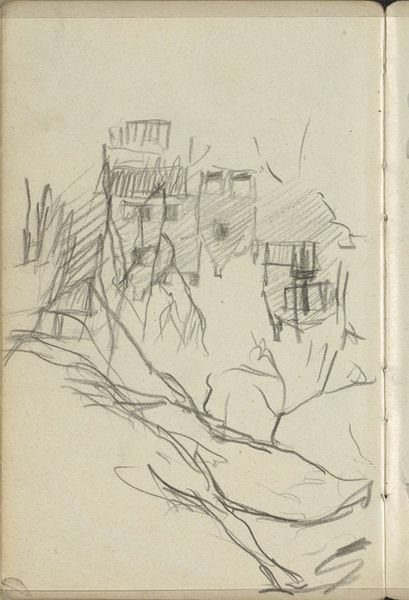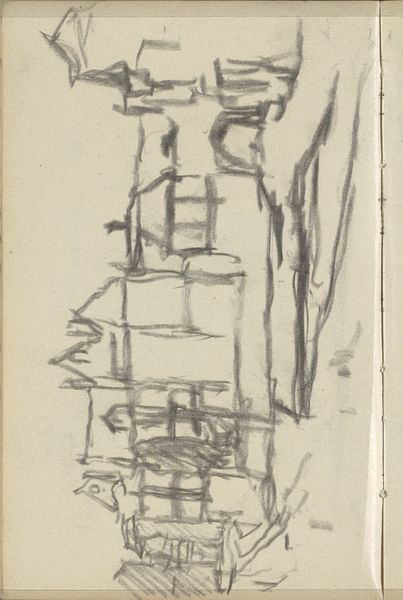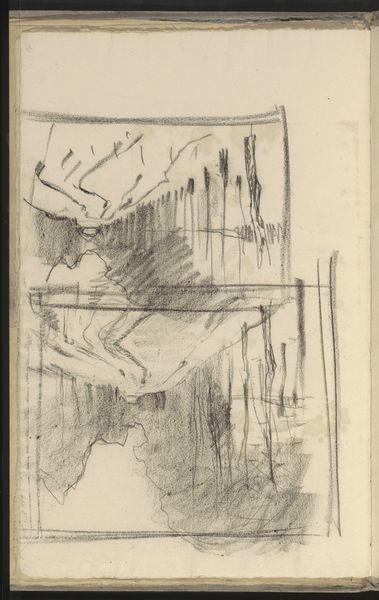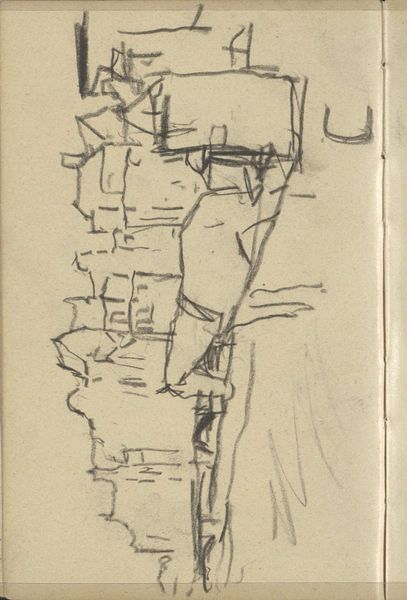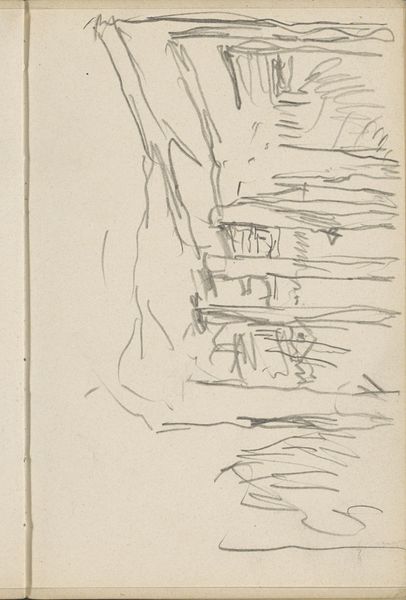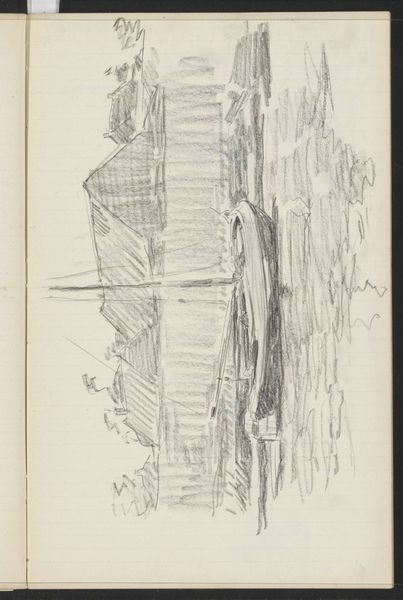
Copyright: Rijks Museum: Open Domain
Editor: Here we have George Hendrik Breitner's "View in Amsterdam" from 1917, a drawing done in graphite. It's just a sketch, but it somehow captures a monumental feeling despite the looseness of the lines. What do you see in this piece? Curator: I see a society in rapid transition. Breitner was known for capturing the gritty reality of urban life, and this sketch, despite its simplicity, hints at the profound social changes occurring in Amsterdam at the time. The industrial revolution was reshaping the city, leading to overcrowding, poverty, and stark class divisions. Editor: So, even a quick sketch can reflect all of that? Curator: Absolutely. The sketch-like quality itself becomes significant. It's not a romanticized view. The buildings aren’t idealized; they seem almost hastily rendered, reflecting a sense of urgency and perhaps even social unease. Consider also how the work would have been displayed – or perhaps, more likely, *not* displayed – affecting its role in shaping public perception. Was Breitner offering social commentary, or merely documenting his surroundings? Perhaps both. Editor: That makes sense. I was only thinking about the style, its roots in Impressionism, but I can see how its purpose is also relevant. What do you mean by that? Curator: I'm suggesting the institutional and political forces behind artistic expression. How was this artwork originally meant to be seen? Where and by whom? Art doesn't exist in a vacuum. Museums, galleries, even sketchbooks like this one, shape how we understand the artist's message and its social implications. How do you imagine contemporary audiences responded to the subject matter? Editor: This makes me rethink how even seemingly simple art reflects a much bigger picture of society at large. Curator: Indeed. And by questioning the "why" behind artistic creation and reception, we uncover the fascinating interplay between art, history, and the social world.
Comments
No comments
Be the first to comment and join the conversation on the ultimate creative platform.

